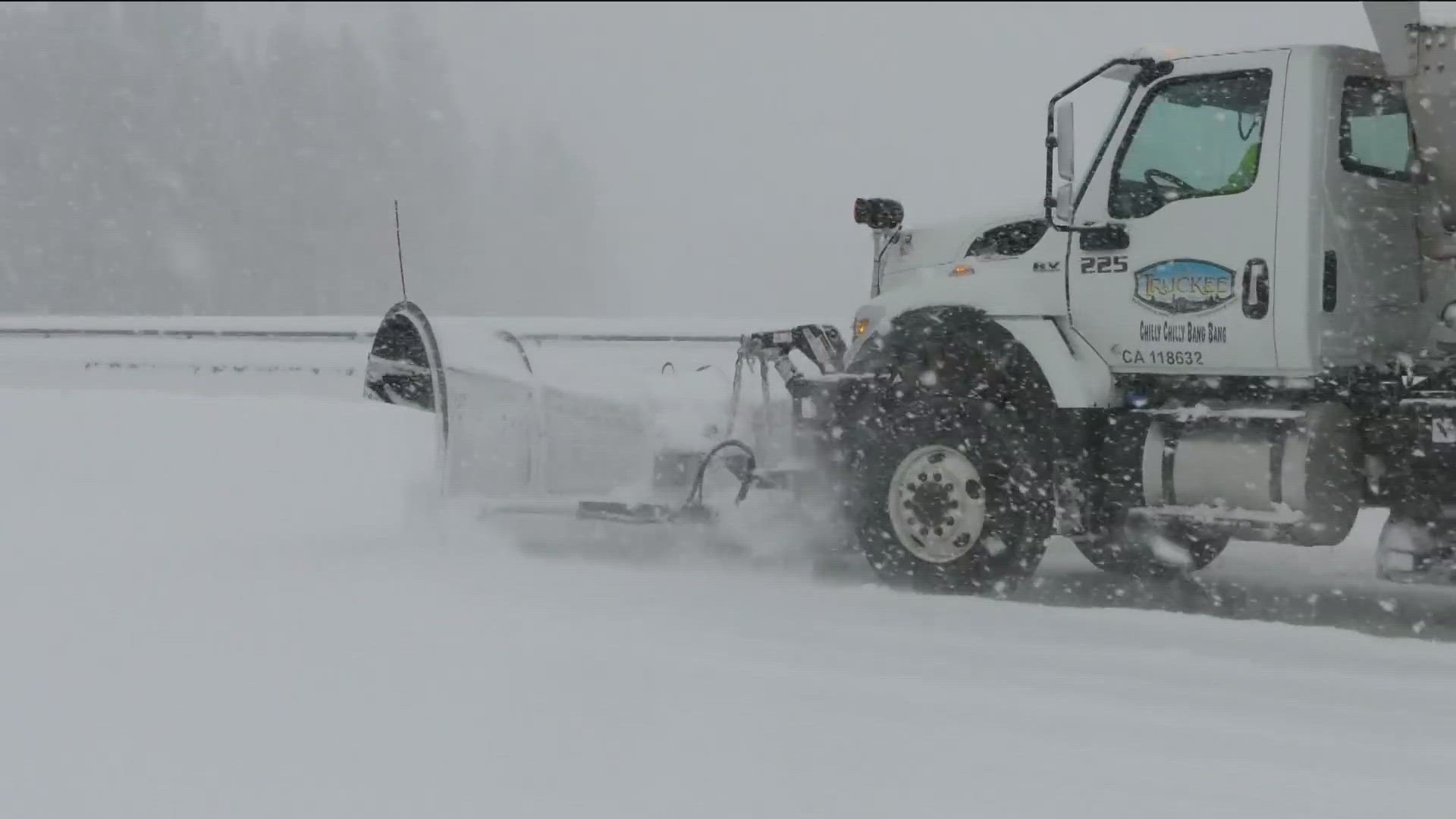SAN DIEGO — Another storm is heading to Southern California but go back in time to the start of the rainy season and it was a totally different story with us looking at a deficit. I spoke with Alex Tardy is a Meteorologist for the National Weather Service and says the January snowpack measurement in the Sierra Nevada had him concerned.
"Starting November, December not much went on. We had a couple of storms and that was it. Christmas was the worst across the United States in terms of snow," Tardy said. "So, when they actually put the stake in it solidified that we were less than half of where we should be."
There should have been 50" to 100" at 7,000 feet. Instead, there was less than 2 feet, but that all changed by late January with the first Atmospheric River.
"It started with a bang. So, San Diego had all that rain in the downtown area," Tardy said.
Then in early February, Tardy said there was another Atmospheric River.
"Literally overnight, it was a week we had feet of snow. From Southern California to Tahoe, from February 1st through the 9th."
That storm cycle doubled, even tripled the snowpack, and it wasn't done.
"Last week we had a storm, and this week, we're looking at another storm. We're not there but we're getting closer to 100%," Tardy said.califon
The Northern Sierra is at 100% with the Central and Southern Sierra Nevada at 75%. According to Tardy, the good news is that the first week of March looks wet and that means more snow.
"This is basically saying we're going to get more rain than normal during that period, this is a prediction based off past weather," Tardy said.
How that translates to our reservoirs is good, most are near 85% anticipating the run-off from the snow. And if you're wondering about this year compared to last year?
"We are nowhere near what we had last year, that's up here, that's up here in yellow. The other year is 82/83," Tardy said.
So, after an incredibly slow start, it looks like our reservoirs and snowpack will end up at average with another month to go, the month of March. We should be sitting pretty at the end of this rainy season.

